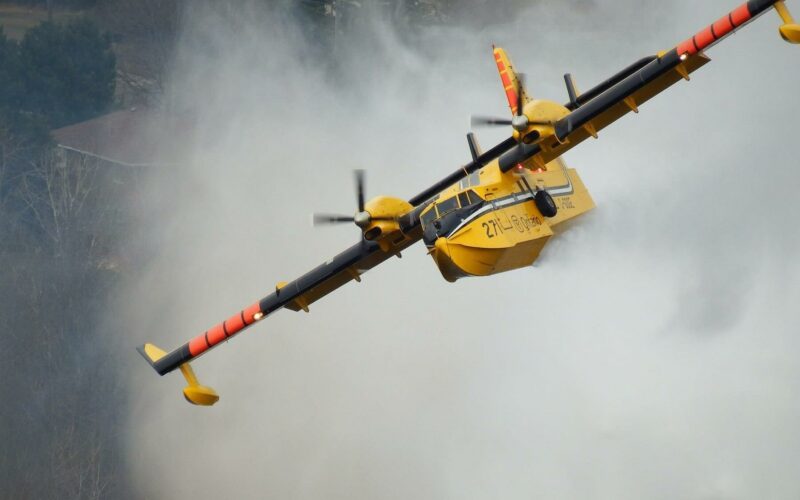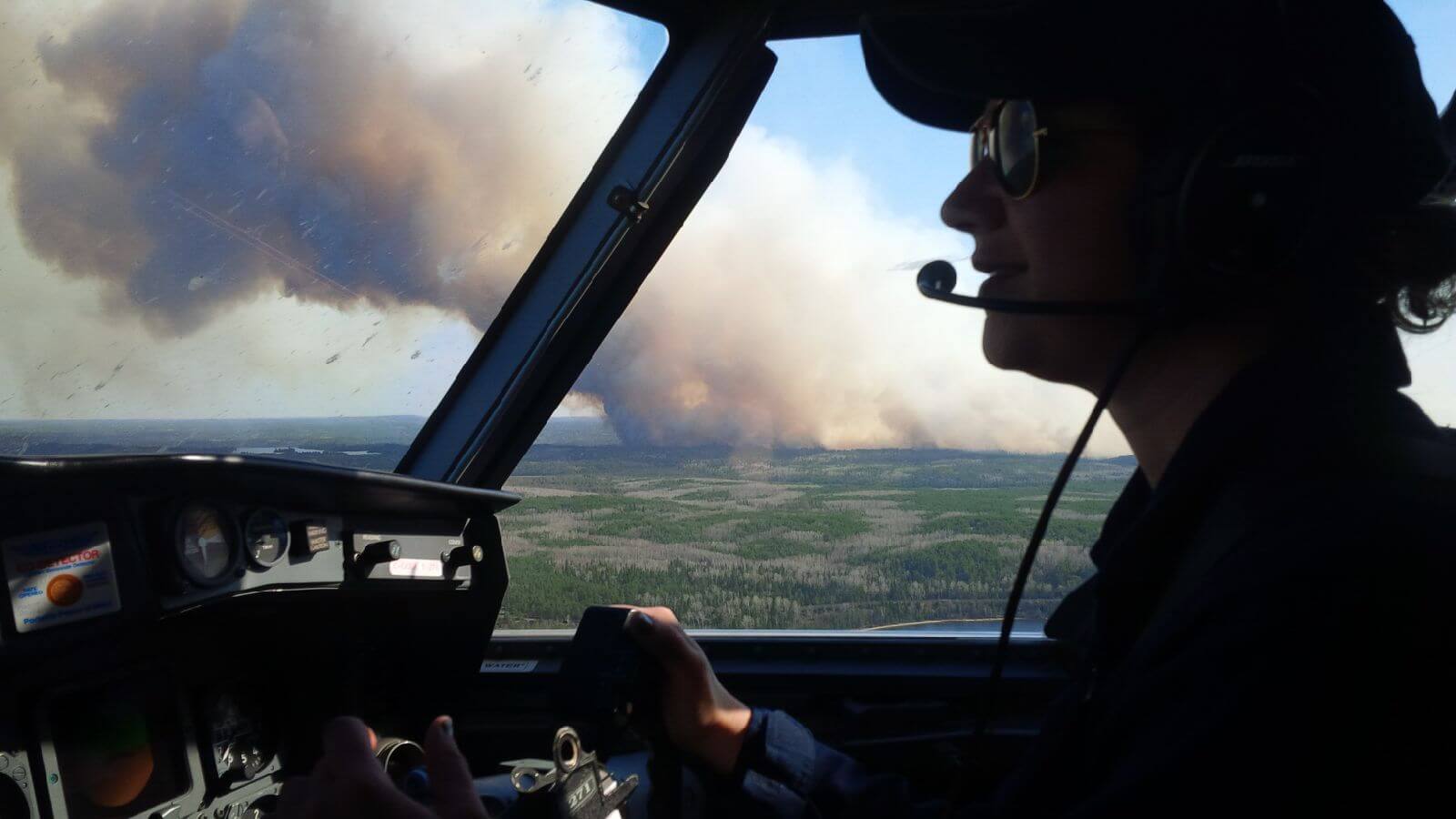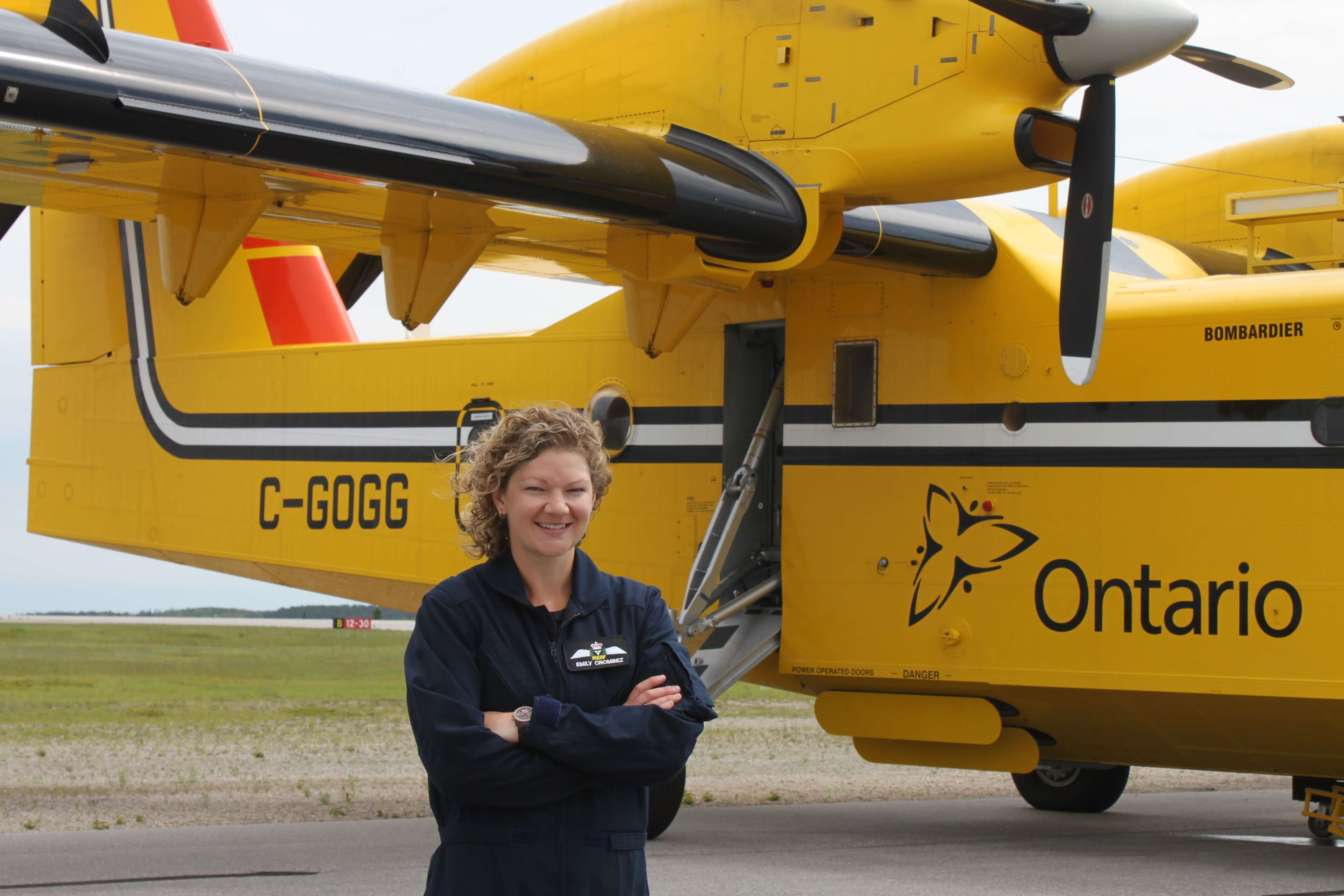Recurring heat waves and droughts during the past 20 years have led to wildfires destroying twice as much of the forest surface as they did at the turn of the century. Global Forest Watch recently published a study in which it showed that an additional 3 million hectares of forest, an area equivalent to Belgium, are lost each year compared to 2001.
Much of that loss (70%) occurred in boreal forests, as the increase in temperature has caused these forests to become more arid, and thus more prone to fires. In Canada, where boreal forests represent around 60% of the nation’s land area, 11% of tree cover has been lost in the past two decades.
When the prevention of forest fires fails, water bombers are the favored solution to try and contain the catastrophe. Through the air, they can reach harder to access areas much faster than ground firefighters, making their role particularly effective as first responders.
As our essential aviation spotlight month draws to a close, AeroTime talked to Emily Crombez, the first woman to fly a Bombardier CL-415 water bomber in North America, about gender bias, the challenges of aerial firefighting and how she is actively encouraging more women to take up positions within the aviation industry.
Grounded in Canadian aviation culture
Emily Crombez was training to become a commercial pilot at Confederation College in Thunder Bay, northern Ontario, when she saw then-Bombardier CL-415 waterbombers at work for the first time. Determined to one day fly one of these planes, she began her career in the Canadian bush.
“I started my career flying floats [floatplanes – ed. note], flying fishermen and hunters into remote lakes that you couldn’t access by roads and building my time towards my goal of flying the CL-415,” Crombez recounted. “That gave me some multi-engine experience, and instrument flying time, because I wanted to make sure I was well rounded.”
Working her way up, Crombez was eventually contracted by Ontario’s Ministry of Natural Resources and Forestry, which manages a fleet of CL-415 waterbombers. This was her first experience supporting firefighting operations.
“But I actually started as a Twin Otter captain, on wheels, flying firefighters to some of our remote locations or moving them around, flying in lots of their equipment, fuel drums for the helicopters at the fires.”
Emily Crombez fighting fire near Kenora, Canada (Courtesy photo)
Becoming a trailblazer
After two seasons in a supporting role, Crombez was finally offered a position in the cockpit of a CL-415 waterbomber in 2014.
“At the time, I had no idea I was the first woman in Canada to fly it; it’s just what I wanted to do,” she explains. “It wasn’t until ground school that the instructor, who had traveled all over the world for Bombardier at the time, told me, you’re the first woman in North America, and he was pretty excited about that.”
One of the reasons why it took until 2014 to see a woman in this role in Canada is due, according to Crombez, to the requirement to acquire floatplane experience first.
“There are very few females flying floatplanes. It’s a job that’s very remote, and it’s very physically demanding because you’re loading heavy motors, generators, propane gas. The physical aspect of the job is hard; it’s not to say we can’t do it,” she explained. “The employers also weren’t necessarily interested in hiring females, and if any female had worked there previously and made any mistake at all, then they said we don’t want to hire another female. So, I always felt there was extra pressure to do well.
“Often, you were expected to do additional roles that other pilots wouldn’t necessarily do on top of your role. You might be told to go in the kitchen at the end of your flying day and do the dishes, or like some extra job like that, which would usually be associated with more domesticated roles, I guess, for females.”
“I even had one group call my boss on the satphone [satellite phone – ed. note] once I dropped them off, and they say, no, you won’t send her to pick us up. And he said, well, then you might be living out there for a long, cold winter.”
The response and management of aerial firefighting creates a challenging – and unique – working environment. What does Crombez see as some of the more significant challenges faced by aerial firefighters?
“The challenge with the aerial firefighting was being on call and waiting. We had to be airborne within five minutes,”Crombez explained. “We did all pre-departure checks on all the systems before we even started our alert, so we could just hop in the airplane and take off. Sometimes being on call was quite difficult, especially if it was a slow season with no flying. That’s when the morale kind of comes down. Everyone’s sitting around, you have lots of time to complain about things and forget how cool of a job it really is.
“But the actual flying itself… I mean, where else do you get to do some of the flying that they basically teach you not to do in flight school? You’re low, you’re slow, you’re heavy, high angles of attack, maneuvering in tight areas, lots of aircraft, scooping 6,100 liters of water in 12 seconds, and then drop the water about 100 feet above the ground… the flying was very, very intense. And I enjoyed that.”
Emily Crombez next to her Bombardier CL-415 (Courtesy photo)
While we might expect attitudes within a government agency to be more progressive, Crombez found that work at the ministry was not free from prejudice.
“Most of the people I worked with were excellent, very respectful,” Crombez pointed out. “But there were always a couple who didn’t want me to be there, and they just thought it should be the Old Boys Club. They made my life difficult there, and that’s why I eventually decided to leave and go to the airlines.”
For all the obvious differences in flying behavior, Crombez found that many of her skills were transferable and could be utilized in her new role.
“In a simulator during flight training, I often will get a comment on my hands and feet position because I’ve had so much experience hand flying in some challenging conditions. I’m flying a [Boeing] 777 now, and we’re on autopilot so often. We’re not maneuvering anywhere close to a CL-415, or the passengers would be going for quite the ride in the back.
“And obviously, the decision-making in all of those positions comes through as well. Even if the instructor doesn’t know my background, they see I have been through some jobs where I’ve had to make decisions in a very short period of time, and that would be a lot of that would stem from that firefighting.”
Although her personal experience as a water bomber pilot was shortened by gender prejudice, Crombez paved the way for more women to take on the role.
“In Ontario, there are two [women] flying a CL-415 now, and I do know of a couple in the US as well. This is encouraging because hopefully if they’re working together, they can create a different dynamic, supportive and kind of fun as well.”
In 2020, a Canadian postage stamp was issued by the Ninety-Nines, the international association of women in flight, to honor Emily Crombez for being the first woman to fly a water bomber in North America. This stamp gave her a platform to continue her work as a trailblazer for women.
“I recently participated in an event called Girls Can Fly, where there were around 800 free introductory flights for young girls. Walking through the airport, these girls often see the typical male pilot and just don’t even think about that. I know when I walk through an airport, there are usually lots of heads turning still, which surprises me. This was a great way to show them that this is a career option for you. And not just as a pilot, you know, maybe a maintenance engineer or avionics technician, dispatcher, air traffic controller. There are so many great jobs in aviation.”



